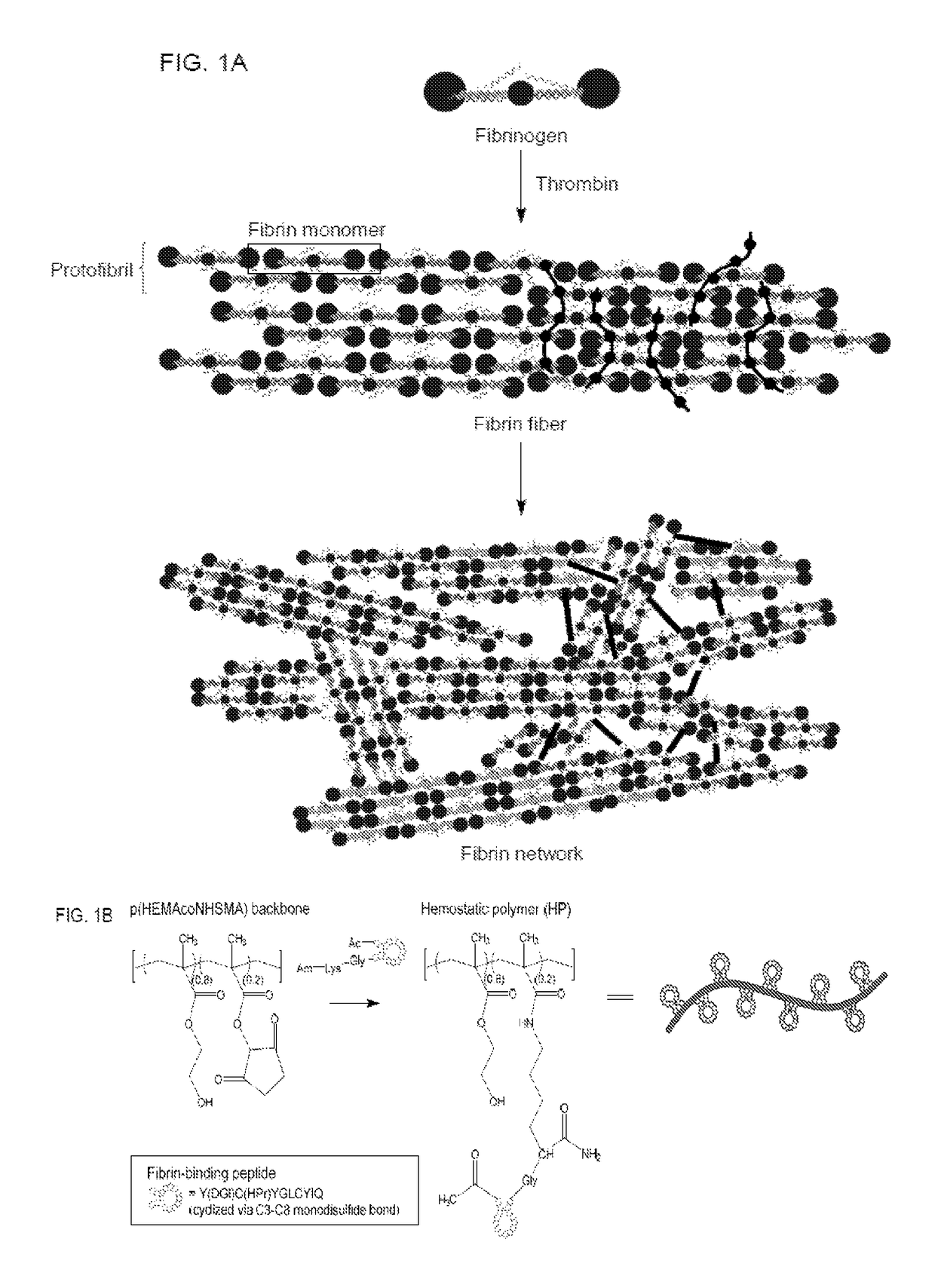Biocompatible polymeric system for targeted treatment of thrombotic and hemostatic disorders
a thrombotic and hemostatic disorder, biocompatible technology, applied in the direction of drug compositions, peptide/protein ingredients, extracellular fluid disorder, etc., can solve the problems of reducing the clotting strength of blood clots in one-fourth of trauma patients, and reducing the clotting strength of blood clots. , to achieve the effect of increasing the fibrin stability in a volume of blood ratio
- Summary
- Abstract
- Description
- Claims
- Application Information
AI Technical Summary
Benefits of technology
Problems solved by technology
Method used
Image
Examples
example 1
osslinking Polymers for Modulating Clot Properties and Inducing Hemostasis
[0100]This example demonstrates a linear (hydroxyethyl)methacrylate (HEMA)-based hemostatic polymer (HP) with multivalent display of fibrin-binding domains designed to crosslink the fibrin matrix in blood clots to increase clot strength and simultaneously integrate synthetic HEMA polymers into fibrin fibers during clot formation to create a fortified hybrid polymer network resistant to enzymatic degradation. Specificity of binding domains to fibrin allows the polymer to hone in to sites of vascular injury after intravascular administration and subsequently crosslink blood clots in situ. In a rat femoral artery injury model, hemorrhage volumes and resuscitative infusion volumes to maintain blood pressure at 60 mm Hg were significantly reduced in HP-treated rats suggesting an increased hemostatic ability. Our findings demonstrate that introduction of synthetic polymer crosslinks to the fibrin matrix of blood clo...
example 2
ic Effect of Hemostatic Polymer and TXA
[0151]This example demonstrates the synergistic effect of hemostatic polymer HP and tranexamic acid (TXA), a clinically-approved antifibrinolytic drug. Fibrin clots were formed with 1.5 mg / mL fibrinogen and 0.5 IU / mL thrombin with the addition of 2 μg / mL plasmin to generate an in vitro hyperfibrinolytic model. TXA alone delays the onset of lysis and increases clot lifetime. Treatment of clots with both TXA and HP increases clotting rate, increases maximum clot strength, and inhibits clot lysis. The results are shown in FIG. 10. Lowest (darkest) line is PBS control; second lowest is 2 μg / mL TXA; third lowest is 10 μg / mL TXA; fourth (third from top) is HP; second from top is 2 μg / mL TXA+HP; top line is 10 μg / mL TXA+HP.
[0152]From the foregoing it will be appreciated that, although specific embodiments of the invention have been described herein for purposes of illustration, various modifications may be made without deviating from the spirit and sc...
PUM
| Property | Measurement | Unit |
|---|---|---|
| molecular weight | aaaaa | aaaaa |
| molecular weight | aaaaa | aaaaa |
| blood pressures | aaaaa | aaaaa |
Abstract
Description
Claims
Application Information
 Login to View More
Login to View More - R&D
- Intellectual Property
- Life Sciences
- Materials
- Tech Scout
- Unparalleled Data Quality
- Higher Quality Content
- 60% Fewer Hallucinations
Browse by: Latest US Patents, China's latest patents, Technical Efficacy Thesaurus, Application Domain, Technology Topic, Popular Technical Reports.
© 2025 PatSnap. All rights reserved.Legal|Privacy policy|Modern Slavery Act Transparency Statement|Sitemap|About US| Contact US: help@patsnap.com



